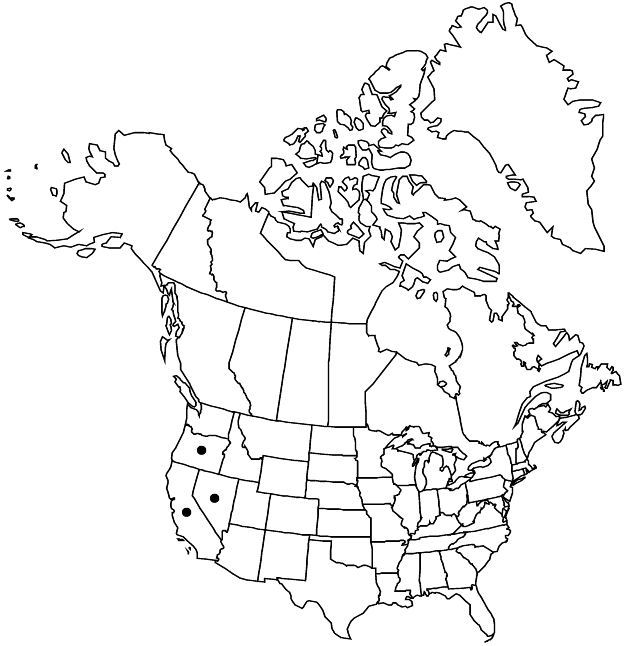Sorbus californica
Pittonia 4: 131. 1900.
Shrubs, 10–20(–40) dm. Stems 1–8; bark dark gray; winter buds red to brown, shiny, conic, 5–12 mm, slightly glutinous, sparsely hairy except along scale margins and apex, hairs rufous. Leaves pinnately compound; stipules often persistent, margins rufous-hairy; blade pale abaxially, shiny, green adaxially, leaflets 7–9(–11), opposite or subopposite, oblong to elliptic, sometimes narrowly elliptic, 2.5–4.1(–4.5) × 0.9–2 cm, l/w ratio 2.1–2.6, margins finely to coarsely serrate, sometimes doubly serrate, apex obtuse to acute, surfaces soon glabrous, leaflet axils and petiole bases hairy, hairs rufous. Panicles 25–120+-flowered, rounded, 3–11 cm diam.; peduncles glabrous or sparsely hairy. Pedicels glabrous or sparsely hairy; fruiting pedicels essentially glabrous. Flowers 9–10 mm diam.; hypanthium glabrous, hypanthium plus sepals 3 mm; sepals 0.7–1.5 mm, margins ciliolate, hairs whitish, irregularly glandular; petals white, broadly ovate, 3–4 mm; stamens 20; carpels distinct, apex conic, styles 3 or 4, 1.5–2 mm. Infructescences glabrous or nearly so. Pomes bright red, globose to subglobose, 6–9 mm diam., shiny if glaucous layer is rubbed off; sepals inconspicuous, incurved. Seeds red-brown, lanceolate, 4 × 2 mm, slightly asymmetric, slightly flattened.
Phenology: Flowering spring; fruiting fall.
Habitat: Mountain slopes, meadows, stream banks, lakeshores, sun or shade
Elevation: 1500–3400 m
Distribution

Calif., Nev., Oreg.
Discussion
Sorbus californica is recognized here in the narrow sense, occurring north to Crater Lake National Park, Oregon (P. F. Zika 2003). The concept in H. A. McAllister (2005) differs, including plants of British Columbia and Washington treated here as S. scopulina. Sorbus californica is distinct in its shiny leaflets less than 4 cm with rufous hairs in the axils. Where their ranges overlap, S. scopulina has hairier inflorescences, leaflets usually more than 4.5 cm, and whitish axillary hairs. The small leaflets and essentially glabrous inflorescences help distinguish S. californica from putative hybrids between S. scopulina and S. sitchensis found farther north, which are otherwise similar with their somewhat shiny leaflets, slightly glaucous fruits, and red axillary hairs. Some collections of S. californica from California are intermediate with either S. sitchensis or S. scopulina and may represent hybrids with those two species.
Selected References
None.